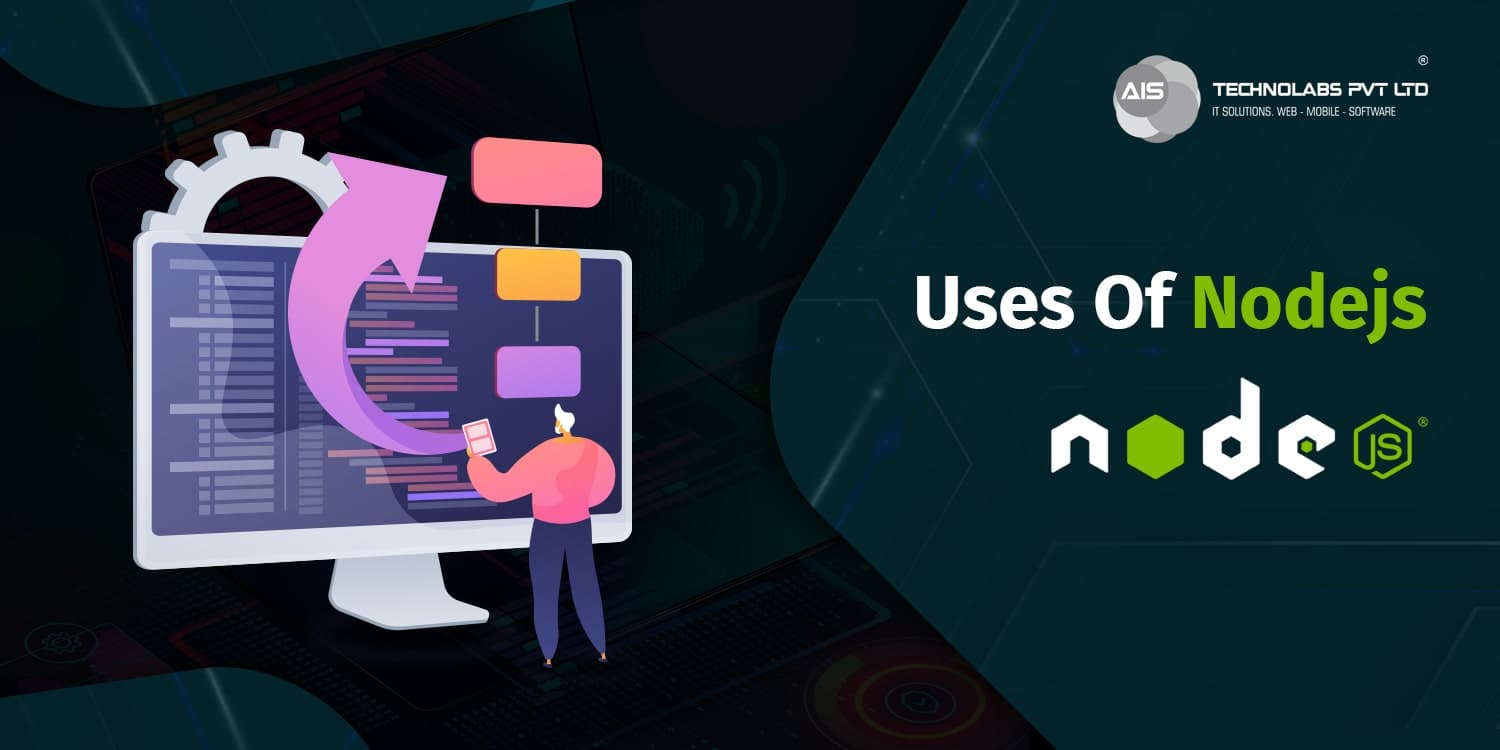Table of Content
(500 views)

Quick Summary
Every software techie needs to develop a quality backend that performs as the backbone of successful software projects. Clients must choose the best-in-class frameworks for web application development. One of the most tested and proven frameworks for backend development is node.js web development.
The backend development task manages user connections, link apps to the database, and power up the other apps' functionalities. Nodejs is a real-time application framework for backend development that writes code in JavaScript. Once the developers use JavaScript on their application's frontend and backend, it lowers the software cost and increases efficiency.
Nodejs development has become the need of the hour for backend technology.
The 7 reasons for choosing Nodejs As Your Backend.
1. Full Stack JavaScript
The developers can implement nodejs as the primary server. It ensures that the clients can use the same language on the frontend and backend technology. Initially, the client used JavaScript for client-side web application development. They had to hire a separate team for backend and frontend development.
Full-stack JavaScript became a reality after node.js contributed to web application growth. The node.js development services became manageable and efficient for every client.
2. Scalability
Nodejs offers numerous benefits. The web applications can be scaled up quickly in horizontal and vertical orientations using nodejs. The apps can be expanded horizontally by adding new nodes to the prevailing system of application resources.
You can contact a nodejs developer to add extra resources to single nodes while the application is scaled vertically. The system must be both lightweight and fast, offering efficient performance and the potential to add new modules every time. Nodejs can handle multiple connections at a time.
3. Active Community
Nodejs developers work in a very peaceful and cooperative environment. The developers are groups of individuals who are very much active in contributing to the advancement of Nodejs. The developers have immense expertise in developing efficient web applications using the nodejs backend technology.
The nodejs app development is a growing community. The nodejs developers have built a fantastic knowledge base for clients to use the nodejs technology efficiently. The dedicated developers provide durable backend solutions.
You can get numerous solutions and codes with the efforts of JavaScript programmers. It increases the number of questions in StackOverflow and adds to the knowledge base of technology.
4. Accessible Technology
Nodejs offers full-stack JavaScript, the most popular programming language amongst all developers globally. This widespread popularity of JavaScript helps the developers understand your application's codebase who are willing to join your project or take part as substitutes.
Business owners can easily track down talented JavaScript developers across the globe for developing nodejs backend technology. The recruitment cost is lower than usual once you hire full-stack developers, and Backend development with nodejs is mostly used for implementing digital products online.
5. Cross-Functional Teams
Every node.js developer is familiar with switching to node.js backend development. JavaScript is the most popular language worldwide scripted for frontend development. Many junior JavaScript programmers use Node.js in less time through training.
In cross-functional teams, clients will have open access to a wide range of experts to work with them. Each member handles writing codes, testing them, deploying updates, and maintaining functions. Effective usage of node.js results in more agility and performance.
6. Microservices
The process of developing new applications becomes easier with the nodejs development. It monitors the functionalities of all parts of the application.
With the help of microservice architecture from Nodejs, clients can divide their web applications into multiple parts. Then, the different teams develop each section without risking the other components.
The teams can be delocalized, which facilitates hiring the exact team of experts for deploying only the necessary updates without rebooting completely.
7. The Efficient Ecosystem of Tools and High Performance
Nodejs app development company offers nodejs software. It is an open-source technology where developers put all their efforts into expanding its capabilities. Hence, many businesses and enterprises benefit from using these efficient nodejs tools.
Nodejs is also known for extraordinary performance for your backend technology development. JavaScript code is compiled into machine code and interpreted with the help of Google's V8 JavaScript engine using Nodejs. Nodejs also stimulate code execution and aids non-blocking I/O operations.
Top 8 NodeJS Frameworks That You Can Use For NodeJS Development
What Are the Uses of NodeJs?

After knowing the most reliable reasons for adapting nodejs for your backend development, let's consider the potential uses of node.js app development.
1. Real-time applications (RTAs)
Real-time applications are digital commodities used by developers for project management, tools, collaborative services, online conferences, etc. Some of the well-known RTAs are Google Docs or Slack, which require heavy input and output operations. Nodejs provides API and WebSockets to update data instantly.
The most widely used RTA is a chat application that requires high traffic and data flow. Nodejs is highly supportive of these applications, which also should be lightweight and fast in performance.
2. Single-page Applications (SPAs)
Nodejs also allows developers to place your entire web application on a single page using the SPAs feature. The application is widespread among various tools, social networks, email, and other websites. Nodejs is an excellent software for SPAs where the data flow offers backend development and enables seamless data updates.
Users can use the page without difficulty and get information about their new data. Nodejs improves the growth of SPAs and is approachable in frontend and backend technologies.
3. Data Streaming Apps
Netflix and Amazon Prime apps use node.js development services to stream their content. Nodejs processes the data in this type of application while uploading. The applications can convey some parts of the content to nodejs, and the other components can be downloaded easily from open connections.
The applications are not limited to audio and video; it works for real-time data input and output.
4. Hosting
Many web developers use nodejs for their backend development projects where they require a proper hosting provider. Platform as a Service (PaaS) service providers allow nodejs incorporation without any issues.
It has an open-source community that delivers excellent modules that make nodejs applications more efficient and powerful. Socket.io is a module that maintains the interaction between clients and servers, and the clients receive real-time updates from the server through notifications.
5. Node Package Manager (NPM)
The Node Package Manager provides users with many readily available components for solving common and niche issues.
Third-party developers create the modules. The clients can access the NPM tool since it is installed automatically with nodejs.
If you handle a vast enterprise and search for security solutions, then NPM will provide you with advanced security features for detecting vulnerable codes.
6. REST APIs
Application Programming Interfaces (APIs) are essential for software development projects. These are mainly based on (REST) representational state transfer.
REST APIs use trending microservices for your backend development. The Express.js framework in the nodejs ecosystem enables developers to create faster REST APIs.
7. Monitoring Dashboards
Nodejs displays the application data in real-time.
You can easily create a dashboard for tracking the activity of your website visitors, visualizing interactions with other elements, and collecting real-time data statistics.
8. Simultaneous Request Handling
Nodejs application development services offer non-blocking IO systems which process numerous requests simultaneously. The system can handle multiple connections at a time, and Nodejs filters many requests within a short time and shares the codes between clients and servers.
It quickly executes all the incoming requests by offering maximum scalability and faster performance to your applications. Nodejs is famous for single-page application websites where the client handles all works, and the backend technology only provides JSON API.
If you are shuffling data, using Nodejs is very worthwhile as it serves numerous requests.
Conclusion
Nodejs is a rapidly expanding software framework that will solve all the obstacles and issues of your web application development. The nodejs development services will be more popular in the coming years, and many enterprises have opted for nodejs services to build backend technology for their web applications.
Many developers want to gain expertise in software development using nodejs. Nodejs is fast, lightweight, and offers high scalability architecture to enterprises who want to launch their products.
If you want to implement nodejs for your backend development, then our nodejs development company AIS Technolabs offers versatile solutions to clients to grow their business.
Top Tips To Boost Your Node.js Development Experience